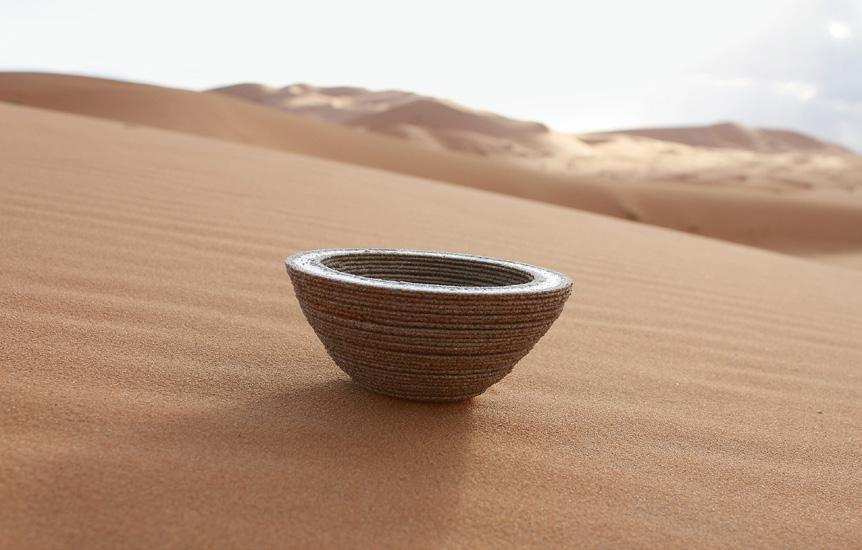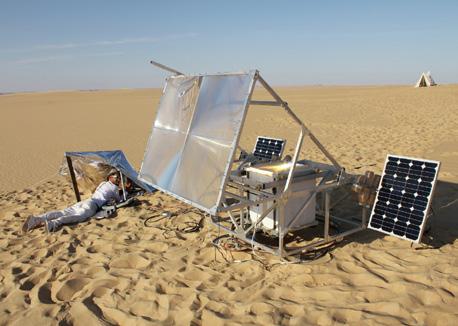
1 minute read
SOLAR PRINTING
from AEOLIAN - AADRL
by Salim Hilles
Harnessing Solar Energy For Digital Fabrication
Fresnal Lense
Advertisement
The lense focuses beams of sun light, generating high amounts of energy, sufficient enough to melt sand and transforming it into solid glass.
Sandbox
The sandbox is used as field for the entire fabrication process. It is necessary to allow the entire remain in a static state, undisturbed by external forces.
Motorized Box
By placing motors on the box, it is able to move the printing field in the XY direction controlled via computer software.
Solar Panels
Harvesting energy from the sun and converting into electrical energy to power the entire the system offsite, allowing it to be a dynamic process of fabrication.
German artist Markus Kayser devised an ingenious way of using natural phenomena as a technology to digitally fabricate using nothing more than the environment around him; the desert. He built a device that uses a large fresnal lense to focus beams of sun light, generating high amounts of energy, enough to melt sand and turn into solid glass. The project explores the potential of manufacturing in extreme environments like deserts by harnessing resources from the surroundings such as raw energy and materials to fabricate three-dimensionl objects. The following are two essential learnings from Kayser’s method of digital fabrication:
I. Machine
The machine is an essential part for this method of fabrication, it’s components are designed and put in place to enable a machine-like process tackle the surrounding environment and harnessing its resources. In this case, the heat as a form of energy and sand as a form of material resource
II) Fabrication Process
It is important to understand the essential factors of how glass objects can be fabricated using this machine. Beyond convert sunlight to highly concentrated sun-beams, the fabrication process goes through multiple stages that are not so different from traditional 3D printers. Recognizing both similarities and differences between both processes is an essential takeaway.
Fabrication Process
Converting Phenomena Into a Piece of Technology
1. Heating
To convert sand particles into glass, the fresnal lense focuses the sunbeams onto the sand box with temperatures as high 1600 degrees Celsius. The generated energy converts sand to glass. The motion of the sandbox allows for custom shapes.
2. Layering
While the motion of the sandbox derives shapes, the result is twodimensional. To generate threedimensional shapes, the field is layered onto the vertical axis. Adding the Z-direction to the printing field.
3. Retrieval
Once the process is complete, the sandbox contains a lever, once pulled or rowed, it brings up the printed object buried underneath the sand.
Certain aspects of the Solar Sintering research proved to be a vital element and source of inspiration with the project’s capabilities of using basic tools and equipments to harness natural phenomena as a form of technology.











